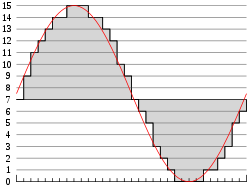| General Discussion Undecided where to post - do it here. |
| Reply to Thread New Thread |
|
|
#1 |
|
|
|
|
|
|
|
#2 |
|
|
|
|
|
|
|
#4 |
|
|
The other day a kid asked me what a floppy disk was. I felt really old then, which is weird because I'm NOT. Kinda surprised he didn't know what they were.
Other anachronisms I've had to explain to underclassmen (a lot of these are a bit before my time): 1. Where "punching in numbers" comes from (punchcards, right?) 2. "Dialing" a telephone 3. Which came first, spam the canned food or spam the junk emails? (this one is my favorite) 4. Why floppy disks are called "floppy" disks 5. Why they are called "screensavers" 6. Why the command to display text in many programming languages is "print" |
|
|
|
|
#5 |
|
|
|
|
|
|
|
#6 |
|
|
The other day a kid asked me what a floppy disk was. I felt really old then, which is weird because I'm NOT. Kinda surprised he didn't know what they were.  Umh, get the home number.  Ancient times. 
|
|
|
|
|
#7 |
|
|
|
|
|
|
|
#8 |
|
|
|
|
|
|
|
#9 |
|
|
|
|
|
|
|
#10 |
|
|
|
|
|
|
|
#13 |
|
|
Dude, if you didn't punch a number in a given column, the machine treated it as a zero. Wait so the 8 numbers are like the 8-digits on a calculator and if I wanted to type in 345,959, I would skip 2 columns, then type the numbers one in each column? |
|
|
|
|
#14 |
|
|
Are you seriously trying to suggest that machine is better than a computer, Jrabbit? No I'm not suggesting that at all.
All it could do was add. Reading is a skill. The typical use of this machine was to total up money. That's why keys in the right-hand column are black. The ones, tens and hundreds columns are white. The thousands, 10Ks and 100Ks are black. Simple visual interface. So at the end of a business day, the cash register is emptied and counted out. Each denomination of bills would be entered separately (X dollars in singles, $Y in fives, etc). No one wanted to punch in all those zeroes, and the machine didn't need them in order to add "nothing" to a given column. Got it now? |
|
|
|
|
#16 |
|
|
Wait, what? Do you know what you are talking about? I think there's about a dozen reasons that doesn't make any sense... I was just trying to illustrate that digital devices are dependent on their granularity (probably the wrong term) for accuracy. Example: 24-bit, 192 kHz digital audio sounds great, while 8-bit, 44.1 kHz falls apart in the upper frequencies. It's audibly inferior because it lacks the acuity needed for the job. (In the 90s, this was a huge issue, both on the production side and for audiophiles. Today, most people listen to .mp3 files through crappy earbuds, so the issue has virtually disappeared.) A properly designed analog system, on the other hand, captures the nuances that are lost in the quantization process inherent in a digital approach. Similar examples exist in fields like video. Today's digital systems have the speed and processing power to overcome a lot of the problem, but it's important IMHO to realize that digital media is at best an approximation of the original source material. A really good approximation. 
|
|
|
|
|
#17 |
|
|
|
|
|
|
|
#18 |
|
|
Well yeah with music... but calculating numbers is different, I think. Not really. To use a really simple example:
A fraction like 1/3 is precise. One in every three. Exactly. Digital results express this differently. Enter it into a calculator; it comes up as 0.3(repeating), the accuracy of which gets closer to, but never equals, the precision of the original number, as you include more significant digits: 0.3 0.33 0.333 0.3333 0.33333 0.333333 0.3333333 etc. Each is a successively closer approximation of 1/3, but none actually equals it exactly. |
|
|
|
|
#19 |
|
|
|
|
|
| Reply to Thread New Thread |
«
Previous Thread
|
Next Thread
»
| Currently Active Users Viewing This Thread: 1 (0 members and 1 guests) | |
|
|







 Linear Mode
Linear Mode


